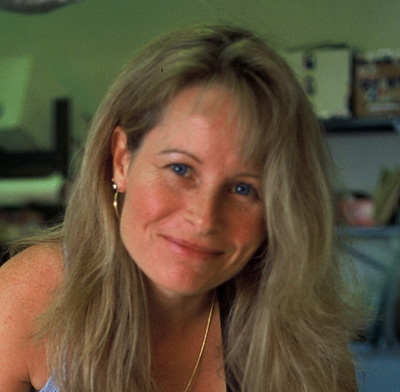Born to a family with diverse artistic and creative skills in the Pacific Northwest, Karen Ehart celebrates more than 23 years of art glass experimentation. In 1984 she picked up a glass cutter and was ruined for any kind of real job. She and a partner opened a stained glass studio in Alabama, designing and fabricating custom work for homes, churches and businesses. They also did glass restoration work on some beautiful old homes. During that time she began melting glass together, a process called fusing, and incorporating pieces in her stained glass work. She then began making fused glass jewelry and this led to a wholesale jewelry line sold to boutiques and galleries. In 1990 she returned to Portland, Oregon where she worked for Savoy Studios, a major commercial art glass studio, and Uroboros glass factory. Savoy Studios distributes dichroic glass and the studio was instrumental in the initial testing and fine-tuning of this medium for the art glass industry. These experiments resulted in gallery quality art pieces. This amazingly lively and reflective coating allows so many design possibilities that she was soon obsessed with using it. During her time spent in Portland glass fusing became her focus. A move to Hawaii in 1992 inspired many new design ideas. The intriguing petroglyph symbols found on cave walls and lava fields began showing up in her art pieces as well as the sea creatures she encountered while snorkeling the coral reefs. Spending much of her mainland time hunting native American rock art led her to the deserts of the Southwest. She fell in love with the wide open spaces and dramatic scenery of Arizona and moved there in 2002. It was in Arizona that she developed the torso series and began concentrating on the skulls and the kiln cast pieces. In May of 2007 she moved back to Eastern Oregon to be nearer her family and the great Northwest. Artist's Statement Glass is a fantastic medium for many reasons. It has a flexibility in dealing with light unlike any other substance. Fusing glass is ideal for my design style because a piece can be designed cold on a kiln shelf and then fired. There is no immediate need to finish a piece since it isn't worked in a fragile hot liquid state. That means I can continuously experiment with the look of a piece before firing.



